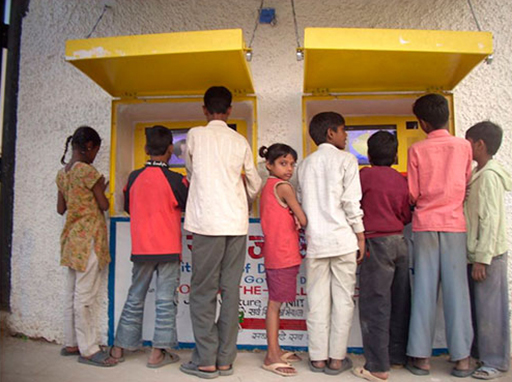1.2 The digital divide
Box 1 A complex phenomenon
Much of what’s being discussed in this course is currently only available to a proportion of the world’s population. The gap between those with ready access to interactive technology and those with limited or no access is often called the ‘digital divide’. There are different aspects to the digital divide.
- There are many people who do not have access to or lack the resources to use interactive technology, due to economic, social or political limitations. For example, it is estimated that 57% of the world’s population did not have internet access by the end of 2015 (ITU, 2015) and that 60% of the world’s population will have access to mobile phones by 2020 – meaning that 40% will not (GSMA, 2015).
- There are others who do not have the skills, knowledge and abilities to use interactive technology. (How do you design an interactive product for someone with limited literacy?)
- There are others who choose not to use this technology.
Of course, this is a simplified characterisation of a complex phenomenon. This course takes an optimistic view of the potential of interactive technology and its role in people’s lives – but we should also be aware of how profoundly people’s lives differ.
Over time, the digital divide may lessen, and the proportion of the population that uses interactive technology may grow. The opportunities provided through interaction design advances may also increasingly address the diversity of users. There are many projects that aim to address the digital divide. One is the ‘Hole in the Wall’ education project (HiWEP, 2011) that made computers available in deprived towns by embedding computers in public walls – and showed that children could learn to use them effectively without instruction. Another is Rwandan Henri Nyakarundi’s Mobile Solar Kiosk (MSK), providing low-cost phone charging to users without ready access to electricity supplies. (ARED, 2014).


